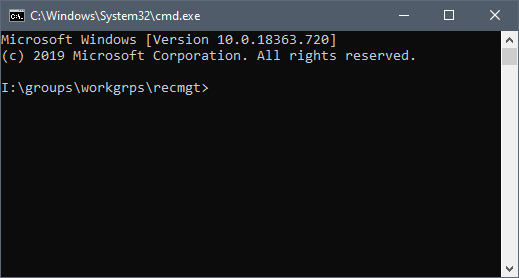
This will keep the Type information from being written to the first line of the file. I have already selected the properties I am interested in working with, so I do not need to provide anything other than a very simple command.īecause I am going to open the output in Microsoft Excel, the one thing I need to do is to remember to use the –NoTypeInformation switched parameter. To export the data to a CSV file, I use the Export-CSV cmdlet. I am not worried about the arrangement of the data, or about doing any sorting because I am planning to send the output to a CSV file so I can open it in Microsoft Excel. The command and the output are shown in the following image: Get-ChildItem -Path E:\music -Filter *.mp3 -Recurse | Select-Object directoryname, basename, length If I choose Length, I will know the size of the file, and that will give me an idea of the length of the song-not directly, but at least an idea. If I choose the BaseName property, I get the name of the song. I look at the list of properties and the associated values, and I decide that if I choose DirectoryName, I will get the name of my music group. Here is the command and the output from the command: In this case, the results end up being a ZZ Top song. Get-ChildItem -Path E:\music -Filter *.mp3 -Recurse | select -Last 1 | Format-List *Īs you can see from the following output, the –Last 1 parameter selects the last file and only one file. Here is the command I use to grab a single file and send the output to the Format-List cmdlet: To do this, I take one file and send it to the Format-List cmdlet so I can see what the sample data would be. Now I need to figure out what properties I am interested in recording.

I have succeeded in finding all of my MP3 files. The command and the output from the command are shown here: I am not worried about that, because I know that I am going to eventually feed the data to a CSV file.
#WINDOWS 10 DIRECTORY LIST TO EXCEL WINDOWS#
The command spits out a lot of stuff in the Windows PowerShell console window. Get-ChildItem -Path E:\music -Filter *.mp3 –Recurse Here is the command to perform a recursive lookup of all the MP3 files in all the folders in the Music folder: The following image illustrates my directory structure: I also know that all of my music files are MP3 files, so I can use the Get-ChildItem cmdlet to find all of my files. It is not too difficult of a task, because I have a folder named Music that is on my E:\ drive (a 1 TB hybrid expansion drive). The first thing I need to do is to find my music files. You should read the first post, List Files in Folders and Subfolders with PowerShell.
#WINDOWS 10 DIRECTORY LIST TO EXCEL SERIES#
Note This is the second in a series of posts that talk about working with files and folders by using Windows PowerShell. Anyway, GB, the solution to your issue is rather simple because Windows PowerShell contains a built-in Export-CSV cmdlet. What does the fox say? keeps wafting across the room from the Scripting Wife’s Surface. But it is not quiet around here for another reason. This morning I am sipping a nice cup of Darjeeling tea with a cinnamon stick in it, and checking my email at I thought it would be a nice quiet morning because I finished teaching my Windows PowerShell for Writers class last week. Microsoft Scripting Guy, Ed Wilson, is here. Is there an easy way to do this by using Windows PowerShell? I would like to be able to look at the file information in Microsoft Excel so that I can find, for example, the largest files, or sort them by directory name. Hey, Scripting Guy! I have a lot of music files that reside in nested folders.

Summary: Microsoft Scripting Guy, Ed Wilson, talks about exporting a directory list to a CSV file and opening the file in Microsoft Excel with Windows PowerShell.


 0 kommentar(er)
0 kommentar(er)
